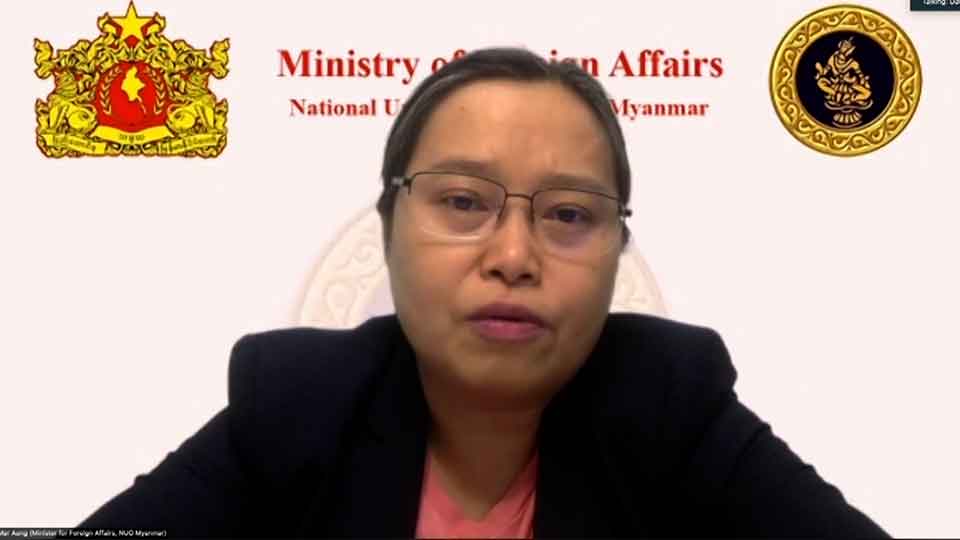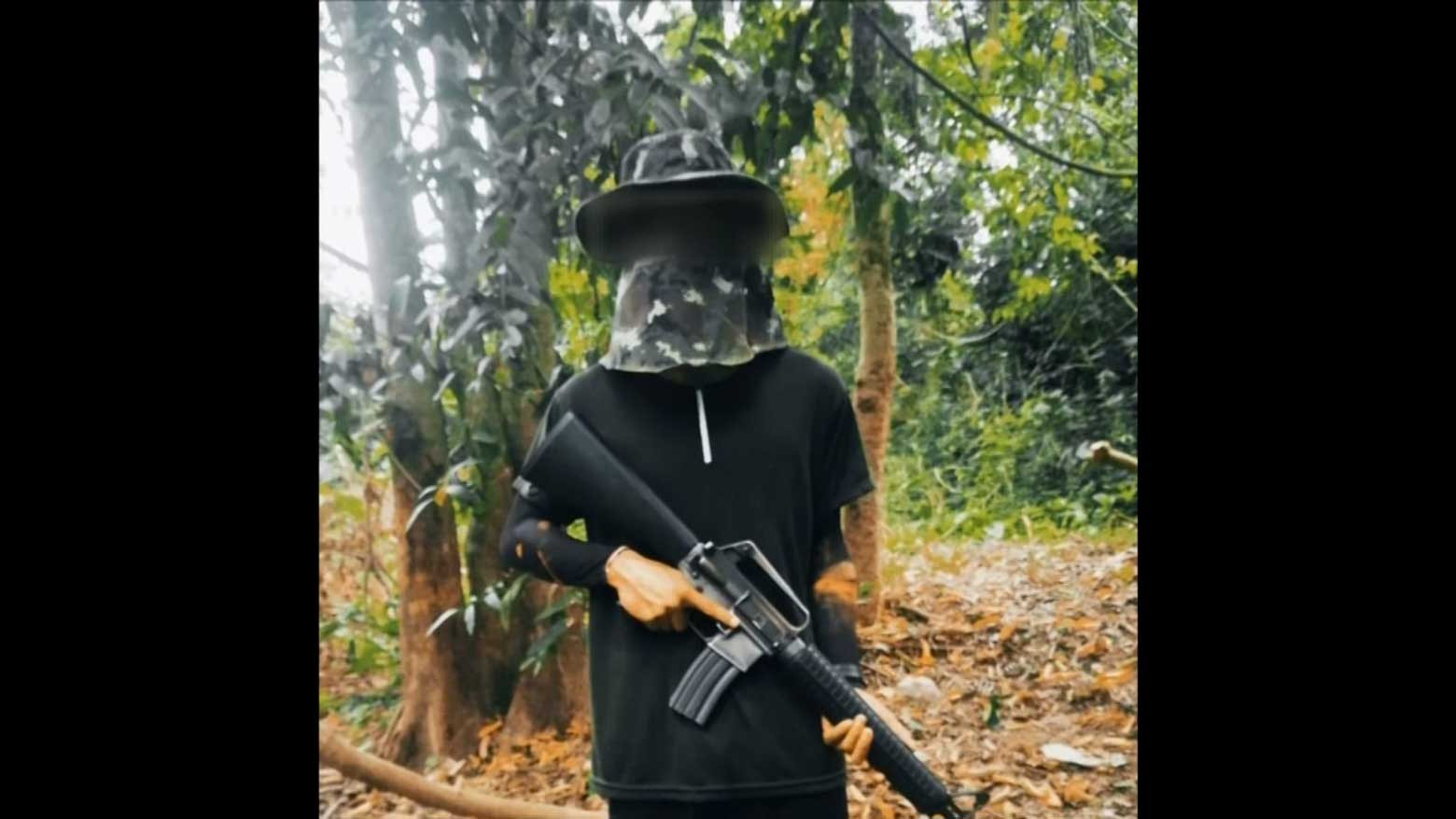From peaceful protests to armed revolution
A shadow government formed by ousted civilian leaders, called the National Unity Government (NUG), declared a “defensive war” against the junta on September 7. That declaration has sparked attacks on police and military posts and resulted in scores of casualties.
The NUG issued a statement arguing that the declaration was a necessary last resort:
“With the failure of various political and diplomatic efforts to stop the military’s brutality in the past eight months, local communities are forced to form defense forces and to defend themselves from continuous military atrocities.”

The NUG's foreign minister, Zin Mar Aung, told NHK in an interview that the declaration was made as the NUG had learned what the military was planning once the monsoon season came to an end. "We received information that they were preparing the biggest military operation in Myanmar's history. Under the circumstances, there was nothing left to do but to move forward with the revolution."
In the weeks since the declaration of the defensive war, civilian militias supporting the NUG known as the People’s Defence Force (PDF) have launched hundreds of guerrilla operations across the country. The members have planted explosive devices at local administration wards, ambushed military convoys and destroyed state-owned telecommunications towers
Watch video: 02:55
“Oni”, not his real name, is a 24-year-old man who has taken part in some of the activities. He and his comrades detonated explosives at police quarters. He returned to Yangon in June after receiving military training in an undisclosed ethnic-controlled area. He said he had frequently joined street protests in the city until he saw one of his close friends get shot and killed. Oni decided peaceful methods were no longer the answer. “We had protested peacefully for two months, but the military killed people using heavy artillery,” he says. “I was so emotionally hurt by their unjust killing. And I know the armed revolution needs more manpower, so I decided to join them.”
Oni says that since the declaration of a defensive war the situation on the ground has intensified. The junta quickly tightened security in Yangon. Forces patrol townships, making random checks of homes and searching the personal belongings of people on the street. In early October, Oni narrowly escaped arrest hours before security forces raided his home. He is currently in hiding. He admits the path he has chosen comes with great risks. But like many other urban guerrillas, Oni remains committed to his cause.
“I am very worried that people would die unnecessarily,” he says. “But we are more worried about the future than death. We are worried we will not be able to live freely in a free country.”.
Guerilla warfare training in the jungle
The armed resistance has been growing since late March, with young people from the cities undertaking armed training in ethnic-controlled areas. Many of them are still in the jungle, preparing for more intense attacks from the junta once the monsoon season is over.

Twenty-two-year-old “Ye Thway”, not his real name, is one of the trainees. He left his home city of Mandalay in April to join a military training camp. After spending months in the jungle, he said he and his friends were excited by the declaration of a defensive war.
“Our comrades had been looking forward to this day since we came here. We can now officially fight back”, he says. “Preparation and exercises are more intense than ever before. Local PDF groups are collaborating faster and more efficiently. Before the NUG’s declaration, I had not been involved in any military operations. I was delighted to be assigned to a secret mission on the day of the declaration”.
But Ye Thway says PDF groups need more support from the NUG. “We have not yet received any effective support from the NUG, and we look forward to receiving it”.

Humanitarian crisis
Remote ethnic regions have so far borne the brunt of the fighting between the military and a combination of ethnic armed organizations and local PDF groups. According to an October report by the United Nations Office for the Coordination of Humanitarian Affairs (OCHA), the security situation in south-eastern Myanmar continued to deteriorate throughout September, particularly in Kayah State and the bordering townships of southern Shan. An estimated 142,000 people remain displaced.
A local humanitarian worker shared details of the poor living conditions of the internally displaced people. “I see most of them laying on the ground with a very thin tarpaulin sheet. They’re trying to build a small hut by themselves with whatever they have,” he says. “They’re just hiding in the jungle without the experience of living in the jungle in monsoon conditions, without or with little food, medicine or water”.
A local woman who was forced to flee with her young child described her struggles: “My child tells me he is afraid of the dark every night after sunset”, she said with teary eyes. “I don’t want to stay here under heavy rain and when it is very cold. I want to live in a safe and warm place”.
Burning villages, laying landmines
Local media report the military has been laying landmines in residential parts of Kayah State, with several people already killed or injured. A Karenni Nationalities Defense Force (KNDF) member told NHK that they have found and defused a large number of landmines and unexploded artillery shells in villages, and there may be many others they haven’t discovered. “The military doesn’t care if it’s a residential area. They don’t care if the landmines kill civilians,” he said.
The military reportedly burned down at least 35 houses in Kayah State’s Demoso township during a two-day battle with local resistance forces in September. A 19-year-old student told NHK that his home was one of them. “My mother worked very hard to build that house. Our hopes, dreams and future are shattered,” he said. “My mother is depressed. I have to be more mature now and take care of her”. They are now sheltering in a nearby village while hundreds of others are scattered in the jungle.
In October, UNICEF published a report on casualties from landmines in Myanmar in 2021. It said more than 90 incidents occurred between January and August, with 53 people killed and 102 injured. Children represented 30 percent of the casualties from landmines and other explosives.
Myanmar’s future is as uncertain as it has ever been, and there is no telling what the People’s Defensive War means for this nation of 55 million people. But with the clashes set to intensify, the humanitarian crisis is certain to get worse.

